Oolong tea is still probably the least known about of all the tea varieties, especially in the Western world. Tea has long been primarily associated with black tea and more recently green tea. Oolong tea varieties, however are becoming more and more known and sought after, partly due to the association that has been given to it in regards to health and in particular weight loss.
You an order Oolong Teas at our Zi Chun Teas Online Shop
Oolong tea (sometimes also written as Wu long tea) literally translates as “black dragon” and simply refers to any partially oxidized teas. Black teas, at one end of the spectrum, are 100% oxidized and green teas, at the other end, are not oxidized at all.
Some of the most popular Oolong tea types include Oriental Beauty, Da Hong Pao, High Mountain Oolongs, Paochong Oolongs, Dong Ding Oolongs, Tieguanyin. There are also many Oolong tea flavors that are blended with natural ingredients or added flavours to enhance a specific taste profile.
Many tea companies market Oolong teas using their own specific Oolong tea brands and there are many different names and brands out there so sometimes you may need to inquire into which Oolong tea variety it actually is. For example I have seen Oriental Beauty marketed under all of the following names: Eastern Beauty; Formosa Fancy; Dong Feng Mei Ren; Bai Hao Oolong; Champagne Formosa Oolong; Silver Tip Oolong, Silver Tip Formosa; Braggart’s Tea and more!
Here is a brief explanation of some of the main Oolong tea varieties. There are, of course many more varieties than these.
 Da Hong Pao (translated as Big Red Robe). This is a heavily oxidized (usually around 70-80%) dark Oolong. It is grown in the Wuyi Mountains region in Fujian Province, China. It is regarded as a premium specialty tea and can be very expensive, being a tribute tea (i.e. one of the teas prepared for Chinese emperors and royalty). Usually ranks number 5 or 6 on China’s 10 famous teas list.
Da Hong Pao (translated as Big Red Robe). This is a heavily oxidized (usually around 70-80%) dark Oolong. It is grown in the Wuyi Mountains region in Fujian Province, China. It is regarded as a premium specialty tea and can be very expensive, being a tribute tea (i.e. one of the teas prepared for Chinese emperors and royalty). Usually ranks number 5 or 6 on China’s 10 famous teas list.
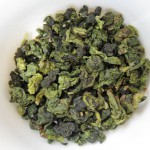 Tieguanyin: (named after the Chinese Goddess of Mercy Guanyin) A lightly oxidized (usually around 15-20%) Oolong (closer to a green tea profile). A famous and often expensive premium Chinese Oolong originally from Anxi, Fujin Province. Also ranks high China’s famous 10 top teas list. Can be processed as a fresh delicate flowery tea or can also be roasted (baked) a little to give it more of a stronger, nutty tasting character.
Tieguanyin: (named after the Chinese Goddess of Mercy Guanyin) A lightly oxidized (usually around 15-20%) Oolong (closer to a green tea profile). A famous and often expensive premium Chinese Oolong originally from Anxi, Fujin Province. Also ranks high China’s famous 10 top teas list. Can be processed as a fresh delicate flowery tea or can also be roasted (baked) a little to give it more of a stronger, nutty tasting character.
 Oriental Beauty: A heavily oxidized Oolong (usually around 65 – 75%), making it a rich full bodied tea getting close to a black tea profile. A unique quality of Oriental Beauty tea is that the oxidization process is initiated by an insect biting the leaves. Generally regarded as a premium specialty tea and primarily grown in central Taiwan and available in limited quantities each year.
Oriental Beauty: A heavily oxidized Oolong (usually around 65 – 75%), making it a rich full bodied tea getting close to a black tea profile. A unique quality of Oriental Beauty tea is that the oxidization process is initiated by an insect biting the leaves. Generally regarded as a premium specialty tea and primarily grown in central Taiwan and available in limited quantities each year.
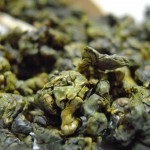 High Mountain Oolongs: (or Gaoshan Cha as it is called in Taiwan). High Mountain Oolongs are a range of fresh, lightly oxidized (usually 15 -25%) high elevation, oolongs grown anywhere between 1,000 m to 2,600 m (3,300 ft to 8,500 ft) in the mountains of Central Taiwan. usually the higher the elevation the more expensive and rare the tea and some of these tea are very expensive.
High Mountain Oolongs: (or Gaoshan Cha as it is called in Taiwan). High Mountain Oolongs are a range of fresh, lightly oxidized (usually 15 -25%) high elevation, oolongs grown anywhere between 1,000 m to 2,600 m (3,300 ft to 8,500 ft) in the mountains of Central Taiwan. usually the higher the elevation the more expensive and rare the tea and some of these tea are very expensive.
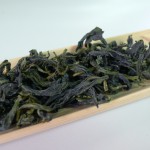 Baozhong Oolong: This is probably the lightest oxidized (usually 10-15% only) of all the oolongs tea and closer to a green tea. The best of the Baozhongs are grown in the Wenshan, Pinglin region in northern Taiwan. Wenshan Baozhong is a premium specialty tea with a very delicate and unique flavour profile.
Baozhong Oolong: This is probably the lightest oxidized (usually 10-15% only) of all the oolongs tea and closer to a green tea. The best of the Baozhongs are grown in the Wenshan, Pinglin region in northern Taiwan. Wenshan Baozhong is a premium specialty tea with a very delicate and unique flavour profile.
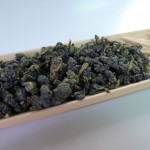 Dong Ding (Tung Ting) Oolong: This is a famous Oolong tea, usually grown in Central Taiwan. Its main characteristic is that is it roasted (baked) to bring out a unique rich, mellow flavour profile.
Dong Ding (Tung Ting) Oolong: This is a famous Oolong tea, usually grown in Central Taiwan. Its main characteristic is that is it roasted (baked) to bring out a unique rich, mellow flavour profile.
Jade Oolong: Taiwan also produces several lightly oxidized fresh Oolong tea varieties grown in lower elevation tea growing regions that are inexpensive, yet still very good quality teas. These include different varieties of Jade Oolong, 4 Seasons Oolong, Jin xuan Oolong and others.
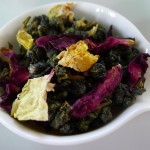 Oolong Tea Flavors: Popular Oolong tea flavors include Milk Oolong; Ginseng Oolong; Osmanthus Oolong; Strawberry Oolong; Rose Oolong; Citrus Oolong and Jasmine Oolong.
Oolong Tea Flavors: Popular Oolong tea flavors include Milk Oolong; Ginseng Oolong; Osmanthus Oolong; Strawberry Oolong; Rose Oolong; Citrus Oolong and Jasmine Oolong.
Other Oolong Varieties: Oolong tea can be found in other parts of the world including Darjeeling Oolong and Assam Oolong teas grown in India. Thailand and Vietnam now also produce a lot of Oolong teas and New Zealand also recently began growing and exporting a variety of Oolong tea
Oolong teas are now available on Amazon and Zi Chun Teas
We currently have the following 2 varieties of Oolong tea available on our Zi Chun Tea Online Shop as well as our Amazon Store below.





Hi Peter,
I love to drink teas, in particular, Chinese ones. When I go to a restaurant I ordered the ones in a teapot an they give you those small cups. Though I am not Chinese. I was accustomed to drinking teas due to my mother’s influence. She loves teas and I learned to love them too. I don’t actually fancy the health part. I just like how they taste especially when I put some lemon and honey for a hot tea. It smells good too.
Hi Paul, Thanks for your comments.
Glad to hear that you enjoy drinking tea Chinese style. It’s my favorite way to brew and enjoy tea. Like many tea drinkers in China and Taiwan, I have a big array of tea pots and tea sets to choose from according to the type of tea I’m drinking, the company I am with, how I’m feeling etc
Hi Peter, I’ve been a coffee drinker for as long as I can remember up until around a year ago when I decided to try and swap my beloved coffee for a healthier option in the form of green tea.
The swap was initially for health benefits and I came to the point where I started to quite enjoy the taste. One day I tried some Mao Feng Green and absolutely loved it as it was completely different to the other green teas that I’ve tried and I absolutely love the taste.
So much so, I hardly ever drink coffee anymore.
I now want to experiment with other types of good quality tea and Oolong has been recommended to me on more than one occasion.
To be honest, I thought it would be as simple as walking into the supermarket and picking up a pack of Oolong until I read this great post and realized exactly how many different types there are and now I don’t have a clue where to begin!
Have you any recommendations for an Oolong novice? I think I’d like to start off with something quite general that will give me a sense of what Oolong is all about.
Also, are there any types that are less processed than others? If so, those are the types that I’d prefer.
Sorry for bombarding you with questions! Thanks in advance.
Thanks Lee for your comments and questions.
Yes, Mao Feng is a very nice tea and ranks high on the Famous Top Ten Chinese Teas list and has been one of China’s Tribute tea over the years – meaning it was selected as one of the teas to present to Chinese Emperors.
Regarding Oolong teas, as you like Mao Feng, I would recommend starting with the lighter Oolongs such Wenshan Baozhong or a High Mountain Oolong such as Alishan or Lishan. These Oolongs are very lightly oxidized (around 10-20% only) and are sometimes referred to as Green Oolongs or Fresh Oolongs.
Check out our Amazon Tea Store – we have the following four popular varieties available: Milk Oolong; Strawberry Oolong; Ginseng Oolong and Organic GABA Oolong
I never knew that black tea is oxidised but green tea is not. But what about white tea? I heard that white tea is even better than green tea. Is this true?
I’ve never heard of these tea variations before, Da Hon Pao, Tieguanyin, and Oriental Beauty. These are interesting names. It is however, Dong Ding (Tung Ting) Oolong, that has the funniest name. If you try saying that over and over again really fast, it is like a tongue twister!
Anyway, which of these varieties of tea do you think tastes the best?
Thanks for your comments and questions Marcus
White tea usually gets lightly oxidized during the initial withering stage process, whereas with the green tea process, the leaves are heated as soon as they are picked to halt the oxidation process.
White tea has many health benefits, but not unlike other teas. Silver Needle white tea, in particular which is comprised mostly of buds or leaf tips can have a slightly higher concentration of antioxidants than regular leaves.
However, all tea tpyes (referring to teas originating from the camellia senensis plant) contains many health properties and it is very beneficial to drink regularly. I will be posting more articles on the health properties of tea shortly.
Yes, there certainly are some unique names of some of the teas – many originating from Chinese. There are also many fascinating stories behind some of the tea names, which I would like to write more about in some upcoming articles.
Tea tasting is very much a personal preference. I like to compare tea tasting to wine tasting – such a vast spectrum of tastes and flavor profiles. My personal favorite Oolongs are Oriental Beauty and a High Mountain Oolongs
Hi Peter,
I always thought Oolong is just one kind of tea with milky taste 🙂 .
I really enjoyed reading your post, but now I have a couple of questions.
First, I’ve never really understood the whole oxidization thing. I’ve heard, of course, that green tea(s) is the most healthy kind. Does it mean, that the more oxidized a tea is, the less healthy it will be?
Second, what’s the most “natural” kind of Oolong? I mean, the flavors that are added are artificial, right? So is there an Oolong tea that comes without any added flavors?
Thanks!
Thanks for your comments and questions, Dmitriy.
The oxidization process changes some of the antioxidants present in the tea leaves, primarily converting the polyphenols known as catechins into flavanoids called theaflavins and thearubigens. So all of the tea types have antioxidants present in different forms depending on the degree of oxidation.
Most of the health properties attributed to tea are present in green, white, black, oolong and pu erh teas. Using loose leaf tea (rather than tea bags) will generally provide more health benefits.
All of the Oolong teas mentioned in the above article (with the exception of the last one – Oolong Tea flavors) are referring to 100% naturally made teas – no additives whatsoever.
. We now have some tea available to order from our Amazon Tea Store including the popular Milk Oolong
I love tea! Generally I stick to unsweetened black tea, but I lvoe to mix it up from time to time. I’ve definitely never heard of Oolong tea and after reading your article, am intrigued to try it!
You did a great job laying out what it is and why it’s rare in the westernized culture. I’d be very interested to try these and really taste the difference on my palette. Great article and I look forward to more.
Thanks for your comments Paul. If you like black teas, the you would probably enjoy some of the more heavily oxidized Oolongs. For example Oriental Beauty Oolong is about 70-75% oxidized and can taste a little similar to a Darjeeling Black tea. If you are interested to try some Oolong teas we now have some available on our Amazon Tea Store including (Milk Oolong, Ginseng Oolong, Strawberry Oolong and Organic GABA Oolong
Thank you for this article, Peter! I read a few articles about teas before but this one is really quite helpful. Does it follow – — More oxidation, less antioxidants?
Thank for your comment, Sunny. Not necessarily less antioxidants, but they do change and convert into other compounds when oxidized. Non-Oxidized tea (green tea) contains certain antioxidants including a catechin called EGCg. This is one of the key antioxidants in green tea and it has some powerful properties associated with it – for example is said to regulate gene activity in cancer cells, and may even prevent cancer growth. When tea leaves undergo the oxidation process this catechin converts to other antioxidant compounds called theaflavins and thearubigens. These are the key antioxidants present in black tea, and some of the more heavily oxidized Oolong teas, and likewise have very beneficial health properties.